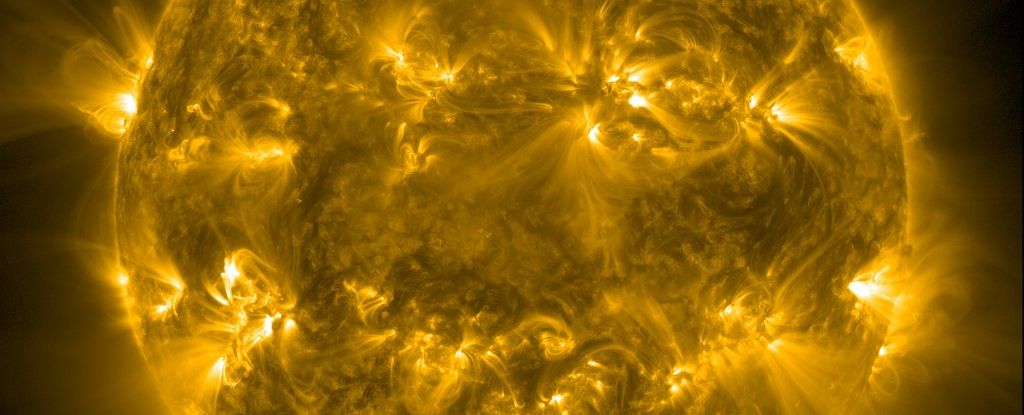The most powerful solar telescope on Earth has just given us a key to help unlock the magnetic mysteries of the Sun.
Now, the Daniel K. Inouye Solar Telescope has provided a map of magnetic fields in the Sun’s corona, the scorching hot realm analogous to an atmosphere. This is information that’s crucial to understanding solar eruptions, sunspots, and the strange mystery of how the Sun’s atmosphere is hotter than its “surface”, a region known as the photosphere.
“The Inouye’s achievement in mapping the Sun’s coronal magnetic fields is a testament to the innovative design and capabilities of this trailblazing unique observatory,” says astronomer Tom Schad of the National Science Foundation’s National Solar Observatory (NSO) in the US.
“This breakthrough promises to significantly enhance our understanding of the solar atmosphere and its influence on our Solar System.”
The surface of the Sun is very hectic and very bright, with a lot of really high-energy shenanigans going on. We can often see the results of those shenanigans, which include flares, and coronal mass ejections that spew billions of tons of solar particles out into the Solar System – but working out the small-scale details of the processes that trigger them is a lot harder to do.
The magnetic fields play a huge role in solar eruptions. Magnetic field lines are constantly roiling, tangling, stretching, snapping, and reconnecting. Sunspots are regions on the photosphere where magnetic fields are particularly strong, and when magnetic field lines snap and reconnect, the process produces a powerful burst of energy and heat that can fling solar material flying.
We don’t often get a clear view of the corona, though. During a solar eclipse, when the Moon blocks out the Sun, we can see streamers and other coronal phenomena in spectacular detail; the design of some solar instruments has been inspired by this, including a piece of equipment known as a coronagraph to block out the solar disk so we can see the corona clearly.
Inouye is one such telescope. Coupled with its high-resolution capabilities, this makes it a powerful instrument for studying processes in the atmosphere of the Sun that are hard to see.
To map the magnetic fields in the solar corona, the telescope used its Cryogenic Near-Infrared Spectropolarimeter to capture something called the Zeeman effect. This is when light in a specific line on a spectrum is split into several lines in the presence of a magnetic field. Scientists have previously tried to observe the Zeeman effect on the Sun, but with limited success.
Using Inouye, Schad and his team obtained clear signatures of the Zeeman effect in the spectral line emitted by iron atoms in the solar corona. What’s more, they were able to observe polarization – giving an unprecedented view of the coronal magnetic field.
This is just the first step. Future observations and analysis will, the researchers say, improve our understanding of the physics of the solar atmosphere – and, in turn, of the space weather generated by the powerful eruptions that can be felt out to Mars and beyond.
“Mapping the strength of the magnetic field in the corona is a fundamental scientific breakthrough, not just for solar research, but for astronomy in general,” says astronomer Christoph Keller, director of the NSO, who was not involved in the research paper.
“This is the beginning of a new era where we will understand how the magnetic fields of stars affect planets, here in our own solar system and in the thousands of exoplanetary systems that we now know about.”
The paper has been published in Science Advances.





